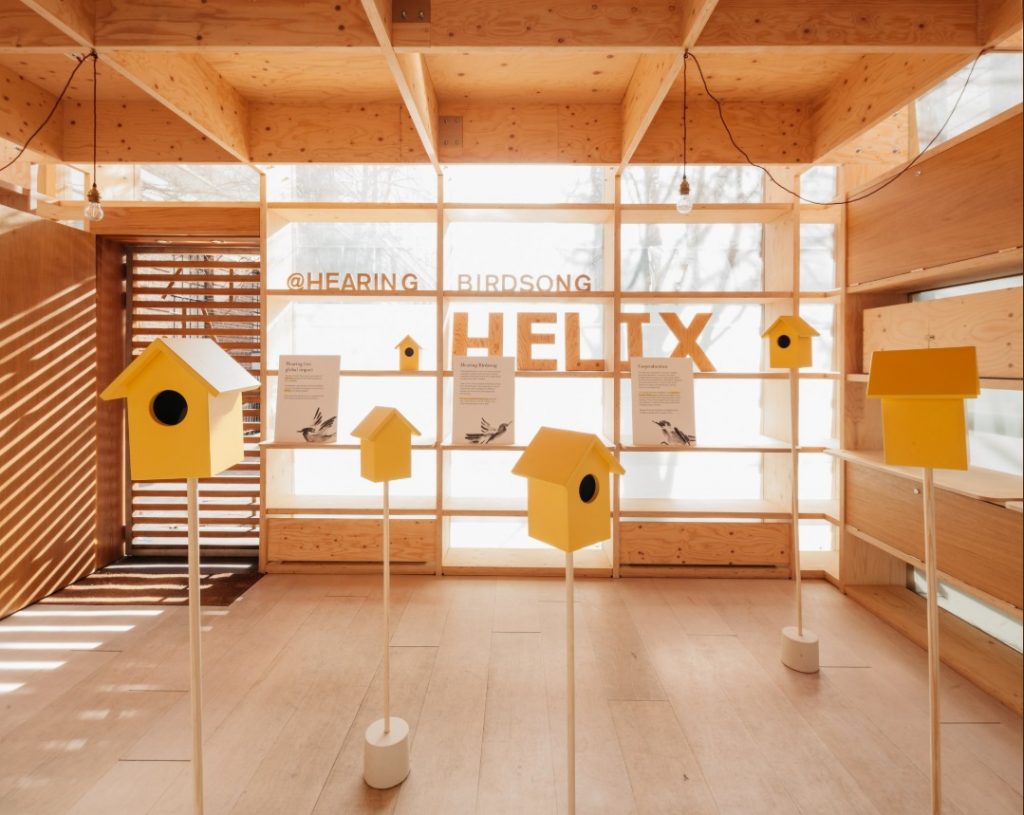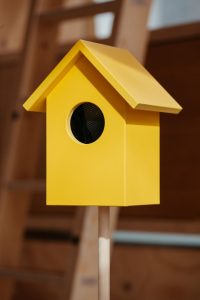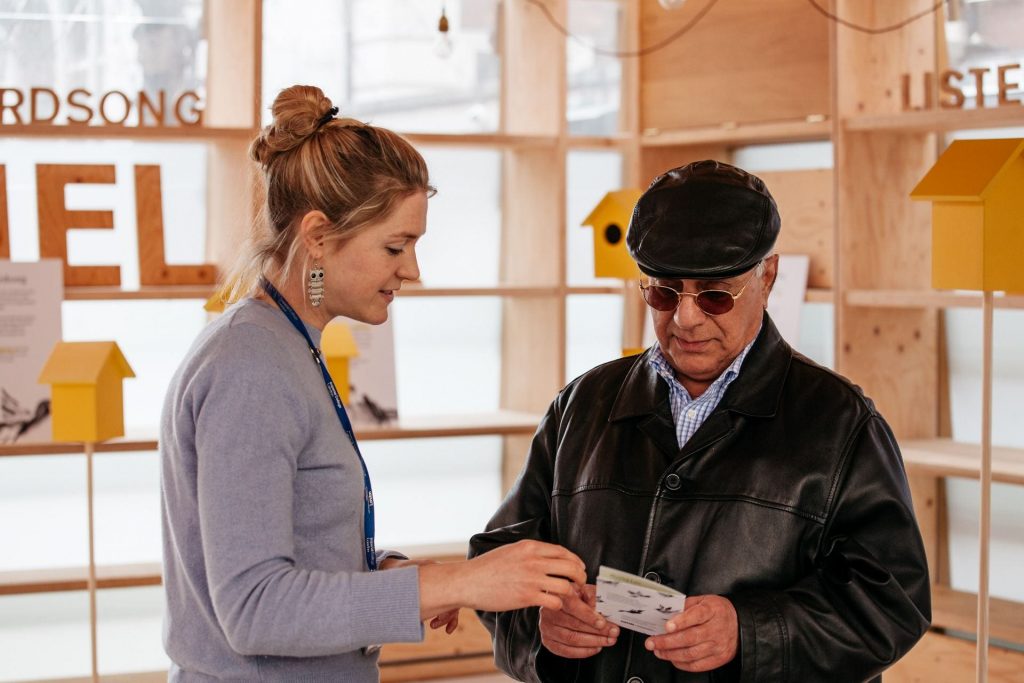
By Anna Lawrence-Jones (co-written with Jean Straus).
This article originally appeared on the UCL Public Engagement blog and has been reposted with permission. Visit the blog to read more about the UCL Centre for Co-Production in Health Research.
In my former job at Cancer Research UK, I organised Sandpit Innovation Workshops that brought together researchers, healthcare professionals and innovative thinkers to come up with novel research ideas to help solve a health challenge. Normally a three-day event, sandpits are a way to generate research ideas – which are inevitably more innovative and daring in this spontaneous environment – and get them funded quickly. But often, patient attendees were part of a panel which selected projects to fund, and were not part of the teams producing the ideas themselves. I often felt these were a lost opportunity for patients to have a greater role.
I imagined an event to co-produce research similar to a gathering of great friends, who have come together to organise a holiday everyone is excited about: Everyone’s there with a vested interest, all are working towards a similar goal, listening and bouncing ideas off each other, considering everyone’s preferences and needs, wanting to keep costs down, even recognising that individuals may have specific roles and bring different but complementing skills. There could be disagreements, but those are surfaced and discussed. Some people in the group might be louder or more assertive, but we all have our allies, who help to stick up for us, so our voice is heard too.
An opportunity
Fast forward to 2018 and I’m a patient and involvement and engagement lead at the NIHR Imperial Patient Safety Translational Research Centre (PSTRC), and the buzz word is now co-production. I’d seen the word branded around and tagged onto workshops which are still not being designed by and with patients from start to finish. I’m fortunate to be in a position where I’m given autonomy to act creatively and seek new opportunities. With my desire to co-produce in more than words only, I leapt at the chance to win funding to be one of the first UCL Centre of Co-production in Health Research pilot projects, of which more details can be found in this blog. The catch was that the project had to cost less than £5000 and be complete in only three months! Getting a date in the diary for busy people, even with Doodle, can be a huge challenge in such a short time frame.
The limitation soon became an advantage. Because the most we could hope to achieve would be to bring different people together, form new relationships and hope for some good ideas, we were relieved from the responsibility of delivering a fully-developed research project. The Centre gave us the space to experiment; its priority, we were told, was not the outcome of the project but what we learned along the way, conducting true co-production. At last, here was a chance to have space for my personal development and to learn to work in a different way.
Rachel Matthews was someone I knew who was equally drawn to co-production and would be up for questioning how we normally operate in the desire to learn and try something novel. Rachel and I had been talking about collaborating on a project that worked with people with hearing loss. My grandmother and cousin’s daughter are deaf in one ear, one from an unaddressed ear infection and one from birth, so hearing loss is an area I’ve always been interested in. Rachel introduced me to a fantastic patient and public engagement champion, Jean Straus, who has hearing loss and, like me, is a member of the Exchange Network (that Rachel’s runs for the NIHR Collaboration for Leadership in Applied Health Research and Care, Northwest London). The three of us got to work.
We decided our project should aim to improve communication between people with mild to moderate hearing loss and health and social care professionals. Our two organisations work in patient safety and quality improvement. Improving communication had also been raised as a major safety issue by patients and carers I’d been working with while coordinating the James Lind Alliance Priority Setting Partnership about safe care for adults with complex health needs.
This topic seemed like the perfect opportunity to test the sandpit methodology, but this time, co-organised with patients with a specific need and with patients as team members at the event, co-producing the ideas. Immediately we hit a stumbling block: the sandpit methodology is usually 30 people talking around tables. Background noise can make it frustrating and exhausting for people with hearing loss to keep up with all that’s going on. Our solution was to divide into three groups, each with a facilitator, and to find a venue with multiple breakout rooms, good acoustics, good lighting (for lip-reading), a sound system, hearing loops and preferably outdoor space (to get oxygen to tired brains). This wish list wasn’t easy to accrue in our three-month window with such a tight budget.
The steering group and decision making
In order to co-produce our event, at speed, we needed to try and pull together a diverse steering group to deliver it. The three of us each brought in at least one other person who brought different expertise. We welcomed the scientific director for NHS England London region and audiologist (Ruth Thomsen), a chief executive of a hearing charity (Anita Grover of Auditory Verbal UK), an Imperial researcher with experience of co-production (Lindsay Dewa) and professor of audiology (Adrian Davis). Each individual wore more than one hat. In fact, some of our professionals also had experience with hearing loss themselves. We brought different knowledge and although specific tasks were assigned to people, the roles remained dynamic and blurred throughout the pilot. We all shared the conviction that disrupting current systems could lead to positive change.
There was a period of forming, storming and norming (Tuckman’s theory of group formation), where, as each member joined the group, a new person had to get to get to know how each other worked and be convinced of the sandpit methodology. When I voiced my relief that the key output for the funder was that we learned about the process of co-production (rather than reporting on the outcome), there were some disgruntled faces around the room. Why would busy people spend hours out of their day to potentially not improve care for people with hearing loss? Addressing these differences in primary aims helped us understand that everyone, in fact, cared about both aims and this honesty helped us build trust. After a few meetings, we reached Tuckman’s final group stage, performing, and thankfully, most of the time, it did seem as if we were at my imaginary friends’ gathering!
To begin with, it felt a contradiction to have a leader while co-producing. However, something we learned quite early on is that someone had to hold the project, playing the role of the coordinator and having oversight of what needed to be done, especially as this project sat alongside our normal day jobs. I was this person and this hidden work became so time-consuming we had to rope in a superb administrator to help.
We also realised it wasn’t essential to have everyone involved in every decision, but you need to establish that you are acting in each other’s interests, even when taking independent decisions. Another way we managed this was not to have formal minutes, but have a WhatsApp group instead where we circulated action and key decisions. This meant communication was more concise, immediate and meant everything was in one searchable thread rather than multiple emails.
Sandpit event planning
Picking the right venue to create an inspiring, community atmosphere was crucial. Ensuring attendees felt at ease was key, so we turned down the offer of the prestigious School of Medicine at St Mary’s Hospital. Notice people when they walk into a respected old institution: you’ll often see them hushing up, as if intimidated by where they are. If located at a hospital, patients may feel anxious returning to a place they associate with being unwell and professionals may find it more difficult to switch off from work and be fully present. We were lucky to secure the Invention Rooms, part of Imperial’s new White City Campus where the local community are welcomed to innovate and try out equipment like 3D printers for free.

The mix of attendees was critical to ensure the ideas were co-produced. We needed researchers, people with experience of hearing loss, industry partners, designers, policy-makers, charity sector and health/social care professionals. They didn’t all need to have experience of hearing loss; the beauty of a sandpit is that a fresh lens often comes up with the most innovative solutions. With no time for an open call and shortlisting, our wonderful steering group drew on their contacts. We also presented to local charities, asked them to post letters to their communities and paid members to attend, in order to reach people from different backgrounds beyond our networks. Our novel approach also secured a further £5000 from the NIHR Imperial Patient Safety Translational Research Centre to award the winning idea – no doubt encouraging two-day attendance (including a Saturday).
The sandpit event
The event itself was held in January, and some of ideas that were conceived are beautifully described in this Imperial news article and Jean’s British Medical Journal blog post. To help inspire people to think outside of the box, we had speakers: George Marcotte (Accenture Digital) spoke about Smart Caption Glasses; Aejaz Zahid (Assistronix) walked us through his incredible innovations; and, Lorenzo Picinali (Imperial College London) demonstrated his engineered hearing technology. The event was very visual; we covered the walls with post-it notes (exploring the problem); had “Facebook” profile posters (so everyone knew the diversity of skills in the room); and, had a scribe who illustrated the solutions as they emerged. The event felt different; not a single person was on their phone and there was great energy in the room; people were connecting and learning. People with hearing loss led projects and were part of teams. The rounds of peer feedback led to a sense of joint-ownership rather than all-out competition.
Hearing Birdsong

Although the event has led to several new ongoing collaborations, the overall winner was Hearing Birdsong. The concept brings together art and technology, using familiar birdsongs at different frequencies (which equate to those you lose during hearing loss) emitted from handmade bird boxes. It uses natural sounds in a safe space to raise awareness of hearing loss in a non-threatening way and encourage those with unaddressed hearing loss to seek further help, if needed. The idea was born from one attendee’s story, Angela Quilley, who was motivated to have her hearing checked after losing the ability to hear the birdsong she loved on her morning woodland walks.
I have been fortunate enough to work with the winning team, led by Tom Woods from Kennedy Woods Architecture, to help co-produce their first event. A team of carpenters, engineers, people with hearing loss, designers, researchers and healthcare professionals transformed the Helix Centre for Design pop-up box into a tranquil place filled with birdsong, where passers-by were invited in for free coffee. This coincided with Hearing Awareness Week in March. Appropriate information and trained staff were on site to encourage conversations around hearing loss in a safe space and signpost to further support, if needed. Of 119 attendees, 9 people chose to sign up to get their hearing tested. Visitors said the experience was “imaginative”, “relatable”, “ambient and pleasurable”.
The team are looking to hold more events and are currently integrating the feedback into the next iteration of design, which we hope to be more interactive. Follow @hearingbirdsong on Twitter to see where the project flies next!

The impact on me
The last six months have made a lasting impact on me. Not only has the sandpit led to an exciting new project, which could have tangible impacts to improve the quality of life for people, but I’ve also entered the hearing loss world and met a keen group of co-producers through being involved with the Centre for Co-production. The Hearing Birdsong project has attracted interest from various organisations and there are other potential hearing collaborations in the pipeline. I have become a better communicator and will think more inclusively going forward. Next time I book any event, I will think about the acoustics and if any attendees have hearing loss, I will circulate the excellent Hearing Access Protocol.
It’s been a privilege to work with and learn from all the people I’ve come across during this project. In particular, working with Jean has been such a rewarding experience. She has taught me so much about what it must be like to live with hearing loss and that individuals have specific needs and preferences. At our wider meetings with the Centre for Co-production, Jean would let people know of her communication preferences. I felt protective of Jean and desperate for her to feel empowered and engaged. Sometimes, I would be so focused on noticing someone was mumbling, or speaking with their hand over their mouth, or not looking at Jean when they were talking; I would not be listening to what they were saying but trying to catch their eye and send them telepathic messages, so they might speak in a way that would help Jean to hear. I learned to not be afraid to remind the group about Jean’s preferences or sit next to her, to repeat any key points she may have missed.
The new bond Jean and I have built is a friendship. We have been to each other’s houses, met people from each other’s lives and shared emotion (happy and sad). Unfortunately, since starting the pilot, Jean’s hearing suddenly deteriorated and she also discovered she wasn’t eligible for a trial that she had hoped could potentially improve hearing; but there were also celebrations when she was invited to write and judge awards for a prestigious journal. I’m always impressed with Jean’s positivity and drive to make a difference for others. I’m grateful for this platform to observe what a truly inspirational person she is.
This blog post is actually mine and Jean’s article, rather than my blog post. Jean and I have talked about my dyslexia and I confided in her that I’m always nervous about writing. Jean is a naturally talented writer and suggested I go to her house for lunch and narrate the story (whilst stroking her cat, Ruby, and sipping tea) and she would paraphrase and type. I hugely learned through this process, and, as my forte is detail, I did the final edit. We acknowledged and accepted each other’s skills and trusted each other to do a good job.
My final reflections
I also acknowledge that although the steering group worked hard and meaningfully co-produced, it worked in our favour that some members were linked to large organisations that had access to extra resources. For the sandpit, for example, we were able to use a free venue, an incredible palantypist (who typed up every word being said in real time, displayed on a screen) and secured the award money, which, I believe, allow our pilot to have greater impact. I understand that this is not always the case. I’m really excited to hear that the new pilots (for which a call will be announced soon) will be longer and with larger funds. I look forward to seeing what seeds they produce and where their roots will grow.
Finally, going back to my analogy about bringing together a group of friends to organise holiday. It works well because: you trust each other, everyone is equal, you’re not scared to voice your opinion, you support each other when other things crop up, and, ultimately they might introduce you to other friends that lead to more gatherings and holidays! Other than the fact we haven’t yet venture out of London, I think our steering group and pilot managed to achieve all of the above!